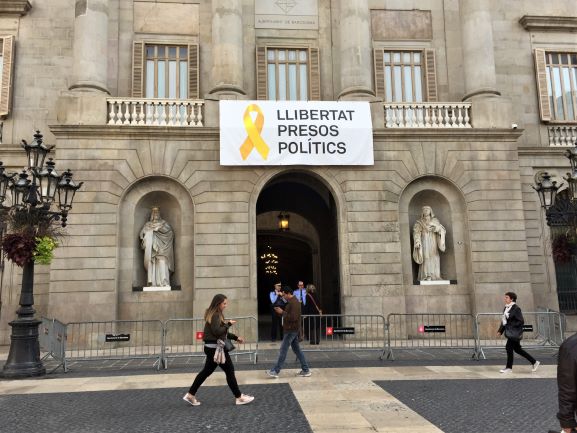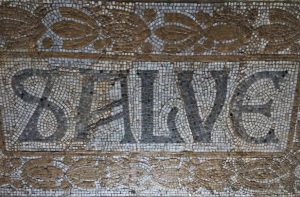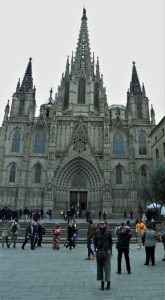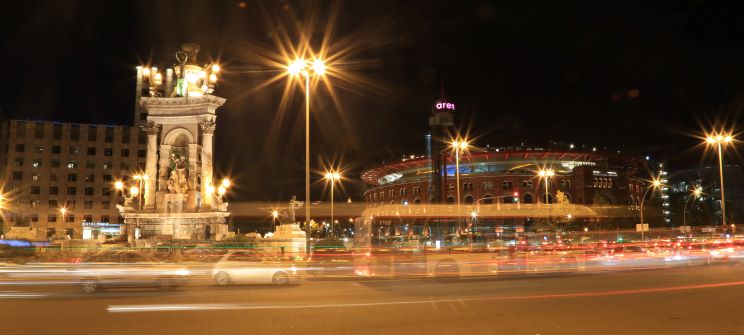This is so challenging to write because Barcelona was so amazing to visit and I have a million photos. I could happily live there and have bocadillos for breakfast every day, walking the city streets that inspired artists and architects, learning Spanish (which is easier to learn than Hindi!).
Barcelona has an incredible history, rich with culture, food, and religion. It has also had ongoing political drama since it was founded, with early Spanish rulers banning Catalonians from speaking their Catalan language and trying to erase their culture. Even in the weeks before we arrived, the province of Catalan has had protests and is demanding to be allowed to become an independent sovereign state. Spain isn’t so keen, as Catalan is only 6.3% of Spain’s land area, but it provides about 1/4 of their GDP… So the war for independence has raged on for centuries. The only sign of any problems was a bit of extra security around political buildings.

Gaudi
From this incredible culture and wealth of creativity, sprung Antoni Gaudí. Gaudi is arguably one of the world’s most famous architects, and I believe he was completely bonkers. His designs remind me of Salvador Dali paintings, with surreal touches, curves, drips, and vibrant colours. Barcelona is known for mosaics and these features heavily in Gaudi’s work. His buildings are numerous and there’s even a park designed by him. His most famous work- albeit unfinished- is the Barcelona Cathedral, or Sagrada Família. It has an incredible history, and started being built in 1882. It is planned to be completed in 2026. At this point, it’s missing most of its main towers, and yet it towers over the rest of the city, flanked by cranes for construction of the remainder of the church. The design is typically loopy Gaudi, with a front facade that seems to drip concrete, sides that are spiky and gothic, and a menagerie of Gods, saints, animals, and fruit that adorn the exterior.



Sagrada Família dominates the skyline completely

Gaudi’s house. More amazing/ loopy architecture

There were a number of other amazing buildings (and architects) around Barcelona. We were walking past a building and were stunned by its beauty. A quick Google told us it was, in fact, a working hospital up until 2009! But was now a tourist attraction… so we visited.
Hospital de Sant Pau
Starting construction in 1901, this hospital was designed by Lluís Domènech i Montaner. He was a man with a vision who wanted to create a hospital for the poor that was beautiful. He thought that it would help them recover quicker, being surrounded by beauty. He also decided that each wing of the hospital should be completely separate- that mental health, maternity, general medical, and infectious patients all have different needs and that treatments are best delivered seperately. Revolutionary at the time! The vision evolved into these beautiful buildings, angels perched on buildings everywhere, an open courtyard dotted with orange trees, and a perfectly functioning hospital. Tunnels underneath linked the buildings so that food, medicine, and the passage of the doctors/ nurses/ nuns were kept from disturbing the therapeutic environment.
With towering ceilings, colourful mosaics, amazing statues and a peaceful courtyard, I think the poor of early Barcelona must have benefited from the vision and drive of Montaner.




Looking over the courtyard of the hospital, back to the front building. You can see the ‘wards’ on either side.

Architecture & churches
As you wind through the alleys and streets of Barcelona, there are buildings that have intricate details, some Gaudi-esque, some gothic, and a whole bunch of other styles I know nothing about. So, time for some pretty pictures.





Spanish food
In 1469, Prince Ferdinand married Princess Isabella. Sadly, they turned out to be total dicks and were pretty horrible to the Catalonians, among others. In 1502, then- Queen Isabella banned Muslims from the Castile area (despite being a mostly Muslim country up until then). Around that time, she also presented the local Jew population with a choice of leaving, converting to Christianity, or being burned at the stake. Some people pretended to convert, and so Isabella and Ferdinand came up with a cunning plan. Anyone who wasn’t seen eating pork quickly drew the attention of the Spanish Inquisition. So naturally, everyone started eating a lot of pork lest they be considered a Jew or Muslim… which is why Spain has a lot of pork.
Fini
I’ll finish with Font màgica de Montjuïc. This ‘magic fountain’ we stumbled upon- we wondered why everyone was sitting around the plaza, in the dark. A quick Google suggested we stick around. Built in 1929, this fountain puts on a light and water display a few times a week, and we happened to be there at that time! Set to a variety of Queen, Abba, and other random music, this was a lovely but cold end to our evening… some would even say it was… magic!



